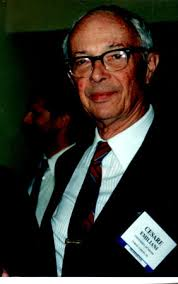Gulf of Mexico
Hornrius, Georgius
Georgius Hornius (1620-1670) was a German theologian, historian and geographer. In his 1669 offering, De Originibus Americanis[1412] he opted for America as Atlantis, based on a literal translation of Plato’s text.
>Thorwald C. Franke refers to Horn’s work “De originibus Americanis”, published in 1669, in which the professor “set up the thesis, among other things, that the Americans descended from Phoenicians, Scythians and Asiatics to reconcile biblical chronology and ethnology. Horn equated Plato’s Atlantis with America, whereby he relocated the sinking of Atlantis to the island world of the Gulf of Mexico: a theory by Peter Martyr d’Anghiera (1457-1526) said that these islands once formed a contiguous mainland. According to Horn, what the Egyptian priest said to Solon only applies to America.“(a)<
(a) Georg Horn – Atlantisforschung.de (atlantisforschung-de.translate.goog) *
Kamienski, Professor Michal *
 Professor Michal Kamienski (1879-1973) was a Polish astronomer at the University of Cracow who claimed that astronomical research could be used to reveal a more exact date for various landmark events in ancient history. As a result of his investigations, in 1957, he proposed(a) that a part of Halley’s Comet fell into the Gulf of Mexico in 9546 BC or 9540 BC and was responsible for the destruction of Atlantis [420].
Professor Michal Kamienski (1879-1973) was a Polish astronomer at the University of Cracow who claimed that astronomical research could be used to reveal a more exact date for various landmark events in ancient history. As a result of his investigations, in 1957, he proposed(a) that a part of Halley’s Comet fell into the Gulf of Mexico in 9546 BC or 9540 BC and was responsible for the destruction of Atlantis [420].
In 1950, he wrote a paper in support of the moon capture theories of Hoerbiger and the Swedish phyiscist Hannes Alfvén (1908-1995).(b)
In 1971, Comet Wolf was renamed Comet Wolf-Kamienski in his honour.
(a) 1956 cont (archive.org) *
(b) Atlantean Research, Vol.2 No.6 Feb/March, 1950
Emiliani, Cesare
Cesare Emiliani (1922-1995) was b orn in Bologna, Italy and is often referred to as the founder of paleoceanography. In 1975, at the University of Miami, Emiliani reported measuring deep-sea cores, taken from the Gulf of Mexico, that demonstrated a shockingly rapid rise of about 325 feet in the world’s sea level — a rate of metres per decade — around 11,600 years ago. He suggested that the rupturing of Ice Dams at the end of the last Ice Age and the resulting floods may have given rise to worldwide flood myths, such as the biblical Deluge(a).
orn in Bologna, Italy and is often referred to as the founder of paleoceanography. In 1975, at the University of Miami, Emiliani reported measuring deep-sea cores, taken from the Gulf of Mexico, that demonstrated a shockingly rapid rise of about 325 feet in the world’s sea level — a rate of metres per decade — around 11,600 years ago. He suggested that the rupturing of Ice Dams at the end of the last Ice Age and the resulting floods may have given rise to worldwide flood myths, such as the biblical Deluge(a).
When he also remarked casually that this was exactly the time Plato had given for the fall of Atlantis his offhand remark was met with severe comments from his peers.
In conversation with Peter Tompkins, he suggested that putative Atlantis sites such as the Azores, Spain and locations off the East Coast of the United States could all have been part of the Atlantean empire [802.193].
Emiliani was the translator of Zdenek Kukal’s book Atlantis in the Light of Modern Research (Earth Science Reviews Vol.21).
(a) Archive 7185 *
